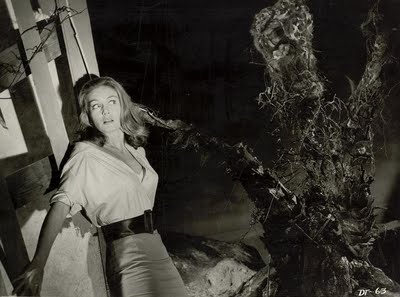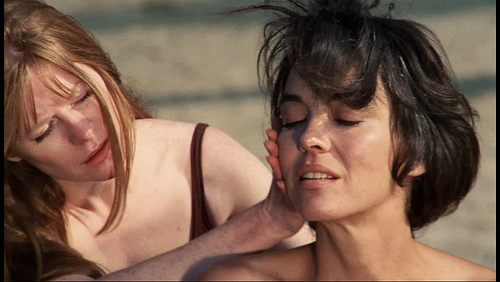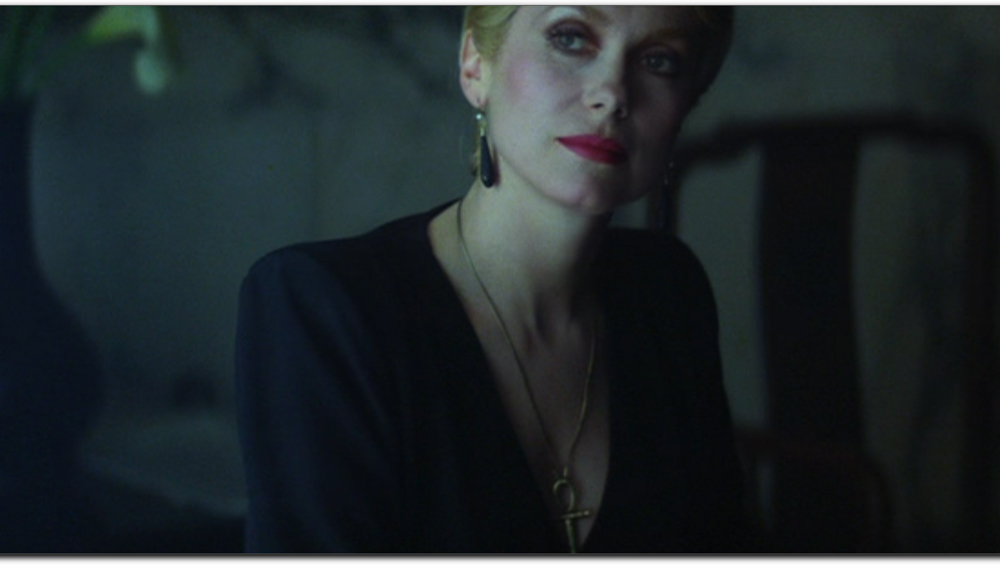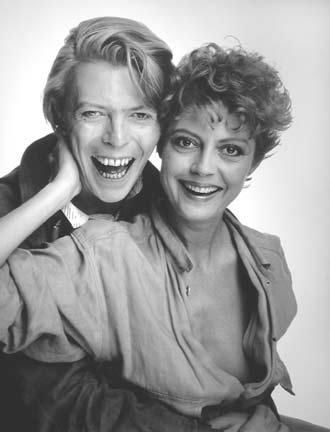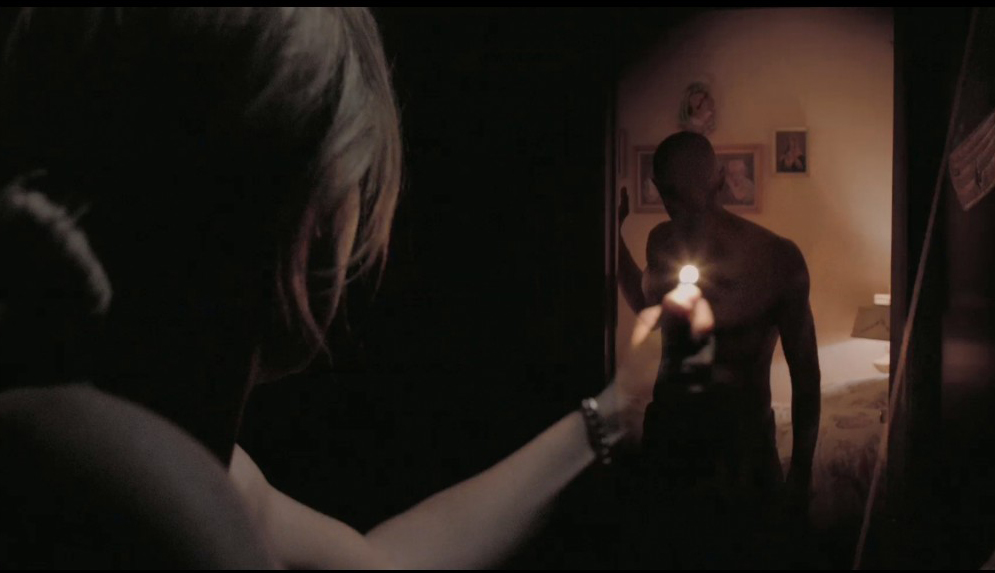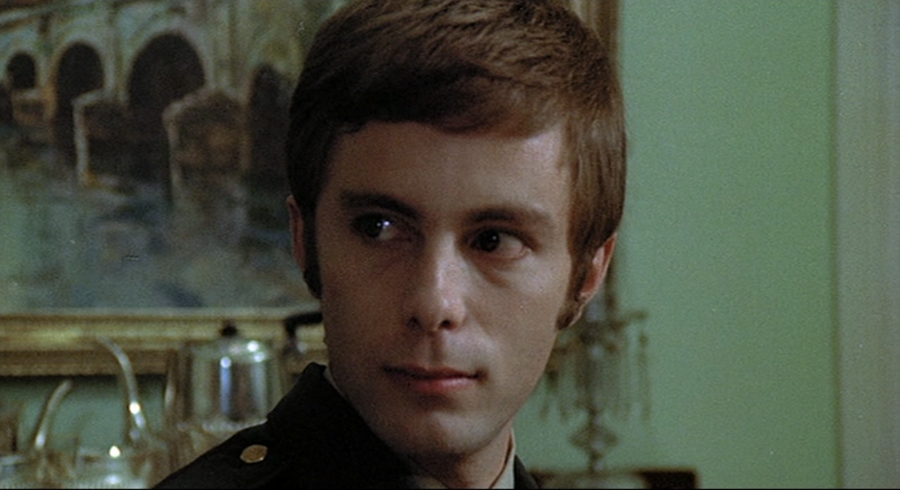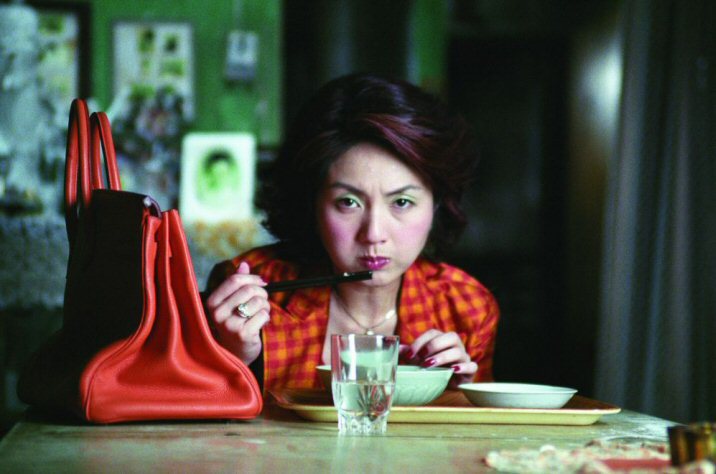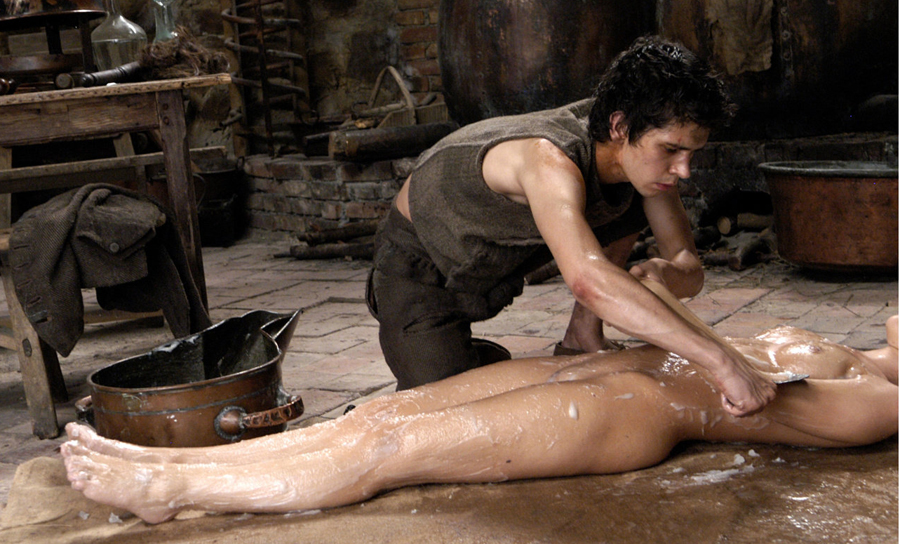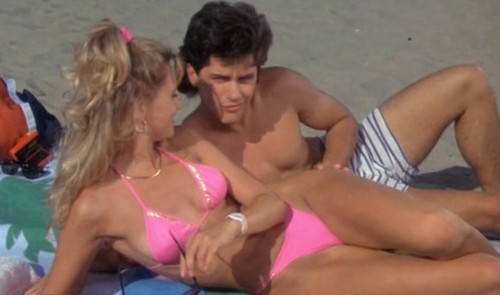EIGHT MONTHS INTO My Year of Horror, I am awash in tedium. I’ve seen every permutation of the jump scare (You’ll find my favorite in The Exorcist III.) I’ve seen more characters making stupid horror movie choices than one logical person should have to endure. I’ve seen eyeballs eaten, squashed, poked, shot, gouged and popped. I’ve seen genitals abused, devoured, stapled, nailed, sliced and amputated. Axes to the face, throats cut, limbs torn off, guts spilled, guts eaten, bodies sliced into parts like the parts of a bloody, sectional sofa…
But there’s a respite—April showers of blood bring strange May flowers. But for one film in this list, all are worth your time and none are what you expect. Kind of like January’s list of peculiar but excellent choices, this list is a collection of hybrids. And we start with a film that combines deadly flora with human decay:
The Day of the Triffids (1962) For those of us who spent hours glued to the television in our youth, The Day of the Triffids was the kind of sci-fi/horror flick that didn’t send you running from the room for Mama. With its doom-laden story about Armageddon and mankind’s descent into savagery, John Wyndham’s 1951 novel takes on themes we’ve seen in everything from Lord of the Flies (written three years later) to 28 Days Later. (Danny Boyle admits that the opening hospital sequence of the 1962 film was the inspiration for his popular zombie flick but the two tales have suspicious similarities beyond that opening. 28 Days Later is basically The Day of the Triffids But With Zombies.) The story has been translated and adapted for radio, TV and film several times so the power of its themes is apparent even if the special effects vary in effectiveness with each telling. A 1981 BBC miniseries does the story justice with moments of excellence, very good performances, and beautifully sculpted monsters (even if they are a bit plastic) but the 1962 film reduces it to tasty, horror essentials. And, in that version, the triffids themselves – walking, thinking, communicating carnivorous plants – are wonderfully terrifying.
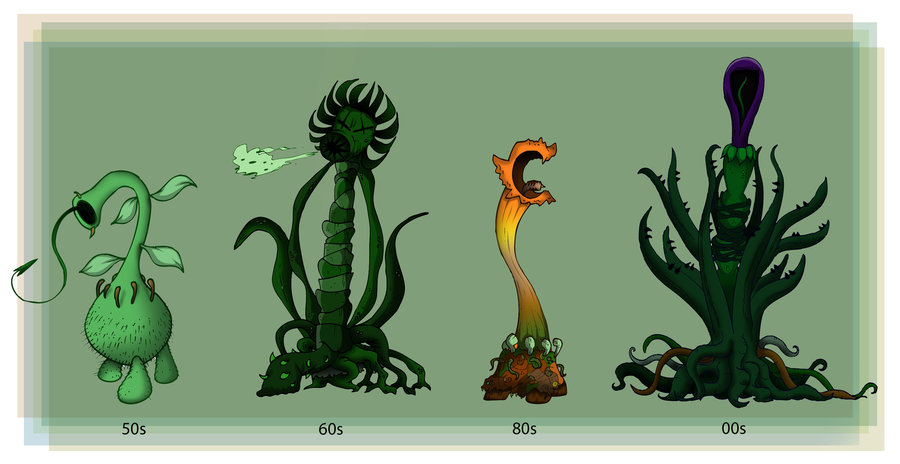
Internet artist Rootay depicts the "Evolution of the Triffids" in the different filmed versions. One online fan known as Orannis0 says, "I think the 60's ones are the most shit-your-pants inducing…"
The story begins with a beautiful meteor shower of terrible consequences—anyone who sees it is rendered blind. The man-eating triffids of the title, whether “fertilized” by the meteors in the 1962 adaptation, or already dangerous as in the original story and its 1981 version, take over the planet, killing and consuming the blind and terrified population. Janette Scott, adoringly mentioned in Richard O’Brien’s The Rocky Horror Show, gives a lovely and honest performance and the general atmosphere of the film will have you imagining chicks in fuzzy sweaters hanging on to their boyfriends in dark movie theatres. Both films ponder the survival of the human race if all known systems were to be suddenly wiped out. The story’s horror is rooted in the selfishness of mankind—the crawling plants which devastate the population are just a metaphor for the demons created and fed by man’s hubris.
Let’s Scare Jessica to Death (1971) – The excellent Zohra Lampert gives this imperfect thriller its emotional weight. With its interesting but inaccurate title, the story is fixed on the question of Jessica’s sanity even though no one is actually conspiring against her. Jessica (Ms. Lampert) arrives with husband and best friend to their recently purchased lakeside home in a bucolic, upstate New York town. Jessica has just been released from a psychiatric institution and her husband believes life away from the city will speed her recovery. When they arrive, the trio is startled to discover a squatter (Mariclare Costello) who has adopted the vacant house. Jessica, intrigued and eager to re-enter the world, invites Emily to stay on.
Peculiar but seemingly innocuous things begin to happen: the discovery of a knife in an attic trunk, the appearance of a mysterious shape in the lake behind the house. The town, also, is notably absent of women while its men brandish strange wounds. As nightmarish images pile up and the Emily grows more menacing, Jessica’s sanity begins to disintegrate. Like Jessica, we are never sure if the horrors are real or imagined. Ms. Lampert, gentle and vulnerable, brings pathos to Jessica’s plight. Without her, the film would be far less intriguing because it hinges on the viewer’s empathy. Successfully creepy moments and an atmosphere of dreamlike horror lead to an unsettling finale consistent with horror films of the 70s. Straightforward cinematography uses odd shots and carefully chosen angles to heighten the suspense and the score is also notably eerie. Though flawed, you may find yourself thinking about this film’s creepy images on lonely nights.
~~~
The Hunger (1983) was Tony Scott’s directorial, feature-film debut. The recently deceased brother of Ridley Scott shared a penchant for visual style and though it overshadows this film’s story, The Hunger is still very much worth your time. Mixing 80’s chic and film noir, the film is elegant and quiet, unlike the parodic 80’s of The Wedding Singer and Rock of Ages and the garish blandness of Society. Yes, there’s big hair, big earrings and we all want to make out with Susan Sarandon while listening to Duran Duran, but the movie has a beautiful gravitas. Catherine Deneuve, who grows more beautiful as she matures, plays Miriam Blaylock, an ancient vampire whose current lover, John (David Bowie), suddenly begins to age, losing his faculties and decaying beyond help.
We learn that after several centuries of youth and vigor all of Miriam’s past lovers have suffered the same fate. Eternally alive but not quite dead, Miriam keeps her lovers in coffins in the attic. Naturally, Susan Sarandon as a scientist studying age and sleep finds her way into the story as John seeks to stop the process. This all leads to the infamous, explicit scene where Deneuve and Sarandon make love accompanied by Delibe’s Flower Duet from Lakmé. In the documentary, The Celluloid Closet, Sarandon recounts that Scott and the film’s creators wanted Sarandon’s character to be drunk but she vetoed it; “Who has to be drunk to kiss Catherine Deneuve?” It’s hard to believe that scene caused the controversy it did at the time—it’s tastefully shot and its most graphic moments have been edited out but the sequence is the turning point in the film, the moment when Sarandon as Sarah begins her transition from human to vampire.
The three principals are superb and treat their roles with dignity. The style of the film gives it a sort of voyeuristic remove, turning this simple vampire film into a surreal, 80’s dream. It holds up amazingly well, even when there are moments that baffle logic—I still have no idea what happens at the climax and why. (Apparently the “powers that be” wanted the ending changed and Ms. Sarandon was not happy about it.) If you haven’t read Whitley Striber’s novel you might find yourself too puzzled to care. But the stars and the director, despite an abundance of smoky rooms and billowing curtains, keep the movie from sliding into camp.
The Pact (2012) is another imperfect hybrid and more problematic than most of the films on this list. It nevertheless has a few startling moments of terror that stand up to the best in horror film-making. Combining several horror tropes—a haunting, a serial killer and an abduction—and much more than a fair share of “stupid horror movie behavior”—you know that thing where every character does stuff they shouldn’t do, The Pact shouldn’t work but somehow does.
At the start of the film, Annie (Caity Lotz) and Nichole’s mother has died. Nichole (Agnes Bruckner) is taking care of the arrangements and Annie is making her way back to the home she gladly left years earlier. Coming to terms with the death of their mother, Annie must also face the childhood traumas which resurface upon her return. Then there’s the sudden disappearance of her sister. A hint that Nichole has done this before keeps Annie from being worried at first though the audience knows something malevolent is at work. When Annie meets up with her cousin Liz and her 5-year-old daughter Eva at the funeral, Annie invites them to keep her company back at home. Strange occurrences in the middle of the night lead to another disappearance and a ghostly attack in the house. Annie barely escapes with Eva in tow. Liz is gone. The rest of the film involves Annie’s relationship with a detective, played by a grizzled Casper Van Dien (the hottie from Starship Troopers), and the unearthing of buried secrets.
The “pact” of the title is never explicitly described but the implication is one of the film’s secrets. McCarthy shows a panache for creeping us out—even if he does overuse *booms* on the soundtrack to jolt us. It’s too bad about that because if he trusted his deeper instincts, he wouldn’t have had to rely on cliché. Good performances keep the film in check. Watching it alone in the middle of the night, I was substantially creeped out.
Deathdream (1972) — alternately titled Dead of Night—is an exceptional little creeper penned by Alan Ormsby and directed by Bob Clark. Ormsby is responsible for the campy but effective Children Shouldn’t Play With Dead Things, released the same year and Clark’s work on Black Christmas remains a touchstone of the genre. Deathdream takes its influence from a ghoulish story we all read in elementary school, “The Monkey’s Paw,” in which a couple is granted three wishes—one being that their dead son return to them.
In Ormsby’s script, Andy, incredibly well-played by Richard Backus, is killed in Vietnam and the news is delivered to his family: parents, Charles and Christine (John Marley & Lynn Carlin), and sister, Cathy (Ormsby’s then-wife, Anya Ormsby). That very night, however, Andy returns and the family welcomes him with all the peculiar happiness and confusion you would expect to attend after what is assumed to be the Army’s (forgive me) grave mistake.
The slow dawning that Andy is not who is he was begins to take its toll on the family until, horribly, Andy strangles the family dog in the presence of some neighbor children. Charles realizes that the dream of his son’s return is a nightmare. The performances are very fine all around. (Incidentally, this is the make-up debut of gore-meister Tom Savini. The make-up effects are rudimentary but you can see the burgeoning talent of the young Savini.) Clark directs the film with a simplicity that brings its dark subject into stark relief. As the family unit splinters under its anguish and denial, the film grows richer film than its low-budget would indicate. Vietnam has made a monster of Andy and this film lends weight, through the medium of horror, to our understanding of the suffering of war…
~~~
Three… Extremes (2004) is an Asian horror omnibus featuring three films from directors of 3 different different countries: Fruit Chan from Hong Kong (“Dumplings”), Park Chan-wook from South Korea (“Cut”) and Takashi Miike from Japan (“Box.”) Each of the films uses the entertainment industry as its springboard for a bizarre story. The “extremes” lie less in excruciating gore (though there is some of that in “Cut”) than in the core ideas. Oddly, the first seems the most extreme even though the final image of Miike’s “Box” makes the greatest impact.
My favorite of these films is “Dumplings” in which an aging actress seeks a gruesome way to reverse the ravages of time. In “Cut” a film director and his wife are held hostage by an extra (who would probably rather be referred to as a “background artist.”) If the director does not do what the kidnapper says, his wife’s fingers will be cut off one by one. Oh—and another thing—the wife is a pianist… In Miike’s “Box,” a pair of sisters, former circus performers, harbor a terrible secret.
Like many anthology films, there is a weak point: “Cut” relies heavily on a stylized theatricality and broad satire, making us more aware of style than content but Chan-wook’s vision is at least consistent. Miike’s film is kind of a downer after the gruesome kookiness of the first two but the varying tone is part of what makes Three… Extremes so fascinating. The acting is of a high caliber but Miriam Yeung as the aging actress and Bai Ling as the dumpling chef make the greatest impact.
~~~
Perfume: The Story of a Murderer (2006) – Part fairy tale, part legend, part horror, wrapped up in a period package, Perfume requires a healthy suspension of disbelief. Dustin Hoffman as a washed-up, Italian perfumer teaches Ben Whishaw as Grenouille the tricks of the perfume trade. Hoffman, though miscast, is as appealing as ever, and Whishaw, as his protégée exudes an appropriate awkwardness. Grenouille’s genius is in his ability to discern fragrances down to the smallest molecule and from miles away – it is also the source of the madness which drives him to murder.
The silly, sniffing sound effect whenever our anti-hero is using his gift, is accidentally funny and details remain unexplained. (Why is the lead character called Frog?) Nevertheless, I found it all fascinating. Tom Tykwer has loaded the film with ripe visuals to account for the powerful aromas we cannot sense but the tale relies on us NOT being able to experience the real thing since what Grenouille attempts is beyond reason: to create the most astounding perfume ever. To do it, he murders his way through France for the ingredients – the parts of his recipe must die in ambergris in order to deliver their gifts.
The art direction, costumes and cinematography support Tykwer’s vision in a sensory explosion of color and fabric which compensate for what we cannot experience. Along the way we learn a little about perfume and its creation, and there are moments of suspense, romance and pathos, as well as a titillating, almost impossibly silly climax at an execution. It’s not a great film, but Tykwer’s work is exceptional and the performances are terrific.
~~~
Society (1989) – Whew. This was a rough one. Not because it scared me but because a film where the hair takes up more space than the plot leaves little room for drama. For 100 minutes I felt as if I had something else to do that would be more productive – like finally organizing my sock drawer.
Billy (Billy Warlock) is a kid with a mullet and a therapist who lives with his high-falutin’ family in Beverly Hills. Young Billy and his hair spend time with his therapist, talkin’ about how troubled and ill-at-ease he is with his unnervingly cold family, though from the outside it looks as though he has it all: wealth, a beautiful girlfriend, popularity and a bitchin’ Jeep Wrangler. Everything seems fine until Billy accidentally walks into the bathroom when his rad sister is showering, only to find she has some talent for contortion. WAIT! Was it a hallucination? Could it be a side-effect of the anti-depressants? Nevermind, Billy soon gets hold of a strange cassette from his sister’s debutante ball – a sort of orgiastic mix-tape of sinister, aural weirdness – sister, parents and other folks sound as if they’re getting it on. Together. Eww – incest!
Despite the freaky details, lackluster direction makes this movie about as ominous as a whiny episode of Beverly Hills 90210. For the first 75 minutes Billy complains, worries and avoids getting clobbered by some really big 80’s shoulder pads. The movie is built around the climactic final scenes with special make-up effects designed by someone named Screaming Mad George (aka Joji Tani). Mostly of the rubber-faced, latex mold variety, the special make-up would hardly pass muster on SyFy’s Face Off.
I can’t quite get past the fact that this movie played at Cannes. It was released in Europe before finally making it to the U.S. Director Brian Yuzna claims Society foundered in the American market because, “Europeans are more willing to accept the ideas that are in a movie.” I don’t disagree that European films often support the cerebral but Bergman this ain’t. Society has one idea—the rich feed off the 99% —which it broadly depicts like an SNL skit: one joke/ no development. Your audience isn’t stupid, Mr. Yuzna, just waaaaay ahead of you. And the special effects are as dated as the earrings. If you want a movie about the rich feeding on the poor, see Fritz Lang’s Metropolis. Filmed 60 years earlier it remains fresh.

